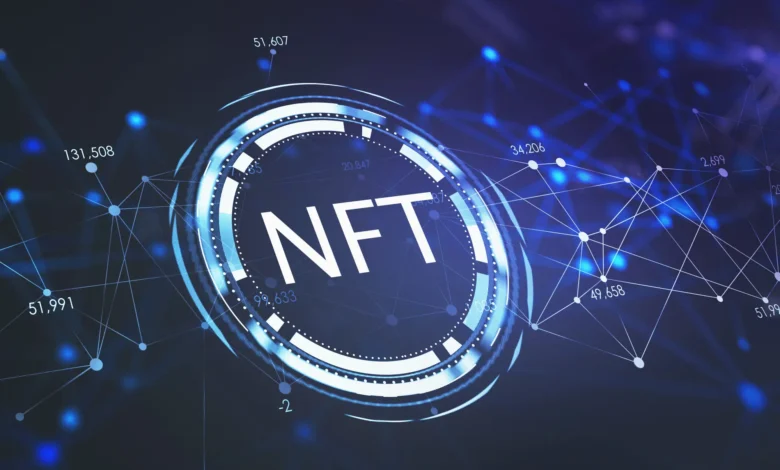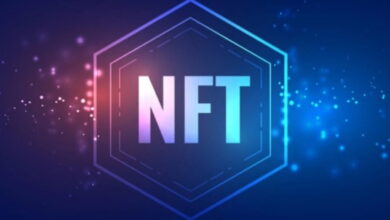NFT Staking Rewards Calculator Maximize Your Digital Asset Earnings 2025

The world of non-fungible tokens (NFTs) has evolved far beyond simple collectibles and digital art. Today, savvy investors are discovering the power of NFT staking as a lucrative passive income strategy. If you’re looking to maximize your digital asset earnings, understanding how to use an NFT staking rewards calculator is essential for making informed investment decisions.
NFT staking represents a revolutionary way to generate consistent returns from your digital collectibles while maintaining ownership. Unlike traditional cryptocurrency staking, NFT staking allows holders to lock their unique digital assets in specialized protocols to earn rewards, typically in the form of native tokens, additional NFTs, or other valuable digital assets. The key to success lies in accurately calculating potential returns before committing your valuable NFTs to any staking program.
An effective NFT staking rewards calculator serves as your financial compass in this emerging market, helping you evaluate different staking opportunities, compare annual percentage yields (APY), and determine the optimal staking duration for your investment goals. Whether you’re a seasoned collector or new to the NFT ecosystem, mastering these calculation tools will significantly impact your long-term profitability and investment strategy.
Understanding NFT Staking Fundamentals
NFT staking operates on similar principles to traditional cryptocurrency staking but with unique characteristics that make it particularly attractive for digital collectors. When you stake your NFTs, you’re essentially lending them to a protocol or platform that uses them to facilitate various blockchain operations, governance mechanisms, or gaming ecosystems.
The staking process typically involves locking your NFTs in a smart contract for a predetermined period. During this time, you cannot trade or transfer your staked assets, but you earn rewards based on the platform’s reward distribution mechanism. The rewards can vary significantly depending on the platform, the rarity of your NFTs, the staking duration, and overall network participation.
Most NFT staking platforms offer flexible staking periods, ranging from a few days to several months or even years. Longer staking periods generally yield higher rewards, but they also involve greater opportunity costs and liquidity risks. Understanding these trade-offs is crucial when using any NFT staking rewards calculator to evaluate potential investments.
How NFT Staking Rewards Calculator Works
An NFT staking rewards calculator functions by analyzing multiple variables to provide accurate earnings projections. These sophisticated tools consider factors such as the current annual percentage yield (APY), staking duration, compound frequency, platform fees, and potential token price fluctuations.
The calculation process begins with inputting your NFT’s current market value or the platform’s specific staking requirements. Most calculators allow you to adjust variables like staking period, expected APY, and compound frequency to model different scenarios. Advanced calculators also factor in token emission rates, total staked supply, and historical performance data to provide more accurate predictions.
Some calculators incorporate dynamic elements such as real-time APY adjustments, network congestion impacts on rewards, and seasonal fluctuations in staking participation. These features help users make more informed decisions by presenting realistic scenarios rather than static projections based solely on current conditions.
Top NFT Staking Platforms and Their Calculators
Ethereum Based Staking Platforms
Ethereum remains the dominant blockchain for NFT staking, hosting numerous platforms with sophisticated reward calculation systems. Platforms like NFTX, NFT20, and various decentralized autonomous organizations (DAOs) offer comprehensive staking opportunities with built-in calculator tools.
NFTX allows users to stake NFTs from popular collections like CryptoPunks and Bored Ape Yacht Club, offering competitive yields through its vault system. Their platform includes an integrated calculator that helps users estimate rewards based on current vault performance and historical data.
Multi Chain Staking Solutions
The expansion of NFT ecosystems across multiple blockchains has created diverse staking opportunities on networks like Polygon, Solana, and Binance Smart Chain. Each network offers unique advantages in terms of transaction costs, staking rewards, and ecosystem maturity.
Polygon-based platforms often feature lower entry barriers and faster transaction confirmations, making them ideal for smaller NFT holders. Solana’s high-performance network enables more complex staking mechanisms with potentially higher yields, while Binance Smart Chain provides access to a growing ecosystem of DeFi-integrated NFT staking opportunities.
Calculating Potential Returns A Step by Step Guide
Assess Your NFT Portfolio
Begin by evaluating your current NFT holdings, focusing on collections that offer staking opportunities. Research the floor prices, rarity rankings, and historical performance of eligible NFTs. This information serves as the foundation for accurate reward calculations.
Document each NFT’s current market value, acquisition cost, and any special attributes that might affect staking rewards. Some platforms offer bonus rewards for rare traits or long-term holders, which can significantly impact your overall returns.
Research Platform Requirements
Each staking platform has specific requirements regarding eligible collections, minimum staking periods, and reward distribution schedules. Thoroughly review these parameters before using any NFT staking rewards calculator to ensure accurate projections.
Pay attention to platform fees, withdrawal restrictions, and any lock-up periods that might affect your liquidity needs. Some platforms charge fees for early withdrawal or impose penalties for unstaking before the predetermined period expires.
Input Variables and Scenarios
Use the calculator to model different scenarios by adjusting key variables such as staking duration, expected APY, and potential market price changes. Run multiple calculations with conservative, moderate, and optimistic assumptions to understand the range of possible outcomes.
Consider factors like token emission schedules, platform governance changes, and broader market conditions that might affect your staking rewards over time. Advanced calculators allow you to model these complex variables for more accurate long-term projections.
Maximizing Your NFT Staking Strategy

Diversification Across Platforms
Spreading your NFT holdings across multiple staking platforms helps mitigate risks while maximizing potential returns. Different platforms may offer varying APYs, reward mechanisms, and risk profiles, allowing you to optimize your overall portfolio performance.
Consider allocating portions of your portfolio to established platforms with proven track records and smaller allocations to newer platforms with potentially higher yields but greater risks. This balanced approach helps protect your investment while capitalizing on emerging opportunities.
Timing Your Stakes
Market timing plays a crucial role in NFT staking success. Monitor platform APYs, token prices, and overall market sentiment to identify optimal entry points. Some platforms adjust their reward rates based on total staked supply, creating opportunities for higher yields during periods of lower participation.
Use NFT staking rewards calculator tools to model the impact of different entry timing scenarios. Calculate the difference between staking during high-APY periods versus waiting for potentially better opportunities in the future.
Compound Rewards Strategy
Many platforms allow you to compound your staking rewards by automatically reinvesting earned tokens back into the staking protocol. This compound effect can significantly boost your long-term returns, especially for longer staking periods.
Calculate the difference between simple reward distribution and compound staking using specialized calculators. The compound advantage often becomes more pronounced over longer time horizons, making it particularly valuable for long-term investment strategies.
Risk Management in NFT Staking
Smart Contract Risks
NFT staking involves interacting with smart contracts that may contain vulnerabilities or bugs. Research the platform’s security audit history, development team reputation, and community feedback before committing significant assets to any staking protocol.
Consider starting with smaller test amounts to evaluate platform reliability and user experience before scaling up your investment. This approach helps minimize potential losses while allowing you to assess the platform’s performance and reward accuracy.
Liquidity Considerations
Staking NFTs typically involves lock-up periods during which you cannot access or trade your assets. Carefully evaluate your liquidity needs and ensure you can afford to have assets locked for the entire staking duration without compromising your financial flexibility.
Use calculators to compare the opportunity cost of staking versus potential trading profits during bull market periods. Sometimes, active trading might generate higher returns than passive staking, depending on market conditions and your trading expertise.
Market Volatility Impact
NFT markets can be highly volatile, with prices fluctuating dramatically based on trends, celebrity endorsements, and broader cryptocurrency market movements. Factor this volatility into your reward calculations and consider how market downturns might affect both your staked assets and reward tokens.
Advanced NFT staking rewards calculator tools incorporate volatility modeling to show how different market scenarios might impact your overall returns. Use these features to stress-test your investment strategy under various market conditions.
Advanced Calculator Features and Tools
Real Time Data Integration
Modern NFT staking calculators integrate real-time data feeds to provide up-to-date APY rates, token prices, and platform statistics. This integration ensures your calculations reflect current market conditions rather than outdated information. Look for calculators that update automatically and provide alerts when significant changes occur in staking parameters or market conditions. These features help you make timely adjustments to your staking strategy.
Historical Performance Analysis
Advanced calculators include historical performance data that helps you understand how staking rewards have changed over time. This information is valuable for predicting future trends and making more informed long-term investment decisions.
Analyze historical APY fluctuations, token price correlations, and platform performance metrics to identify patterns and potential future opportunities. This data-driven approach improves the accuracy of your investment projections.
Multi Asset Portfolio Modeling
Sophisticated calculators allow you to model entire NFT portfolios across multiple platforms and staking opportunities. These tools help optimize your asset allocation by comparing different staking options and identifying the most profitable combinations. Use portfolio modeling features to balance risk and reward across your entire NFT holding, ensuring optimal diversification while maximizing overall returns.
Tax Implications of NFT Staking Rewards

Understanding Tax Treatment
NFT staking rewards are generally treated as taxable income in most jurisdictions, with specific tax implications depending on your location and the nature of the rewards received. Consult with tax professionals familiar with cryptocurrency and NFT taxation to ensure compliance.
Keep detailed records of all staking activities, including reward amounts, dates received, fair market values at the time of receipt, and any applicable transaction fees. This documentation is essential for accurate tax reporting and potential audit situations.
Tracking Tools and Resources
Use specialized tracking software to monitor your staking rewards and calculate tax obligations automatically. Many platforms integrate with popular cryptocurrency tax software to streamline the reporting process. Consider the tax implications when using NFT staking rewards calculator tools. After-tax returns may differ significantly from gross staking rewards, especially for high-earning individuals in higher tax brackets.
Future Trends in NFT Staking
Institutional Adoption
Growing institutional interest in NFTs is driving the development of more sophisticated staking platforms and calculation tools. Institutional-grade platforms often feature enhanced security, compliance features, and advanced analytics capabilities. Monitor institutional platform developments as they often set industry standards for security, reward calculations, and user experience that eventually trickle down to retail platforms.
Cross Chain Integration
The future of NFT staking lies in cross-chain compatibility, allowing users to stake NFTs from different blockchains in unified platforms. This development will require more sophisticated calculators capable of handling multi-chain scenarios and cross-chain reward mechanisms. Prepare for this evolution by familiarizing yourself with cross-chain technologies and platforms that are pioneering these integrated approaches to NFT staking.
Enhanced Reward Mechanisms
Platforms are developing increasingly complex reward mechanisms that go beyond simple token distribution. These may include NFT rewards, governance tokens, access to exclusive events, or integration with gaming and metaverse platforms. Future NFT staking rewards calculator tools will need to account for these diverse reward types and their varying valuations, requiring more sophisticated modeling capabilities.
Common Mistakes to Avoid
Over-Relying on Current APY Rates
One of the most common mistakes is assuming current APY rates will remain constant throughout the staking period. APY rates can fluctuate significantly based on platform adoption, token economics, and market conditions.
Always use conservative estimates and model multiple scenarios when calculating potential returns. Consider how APY changes might impact your overall investment strategy and have contingency plans for different outcomes.
Ignoring Platform Risks
Not all staking platforms are created equal. Some may have inadequate security measures, unproven teams, or unsustainable reward mechanisms. Thoroughly research platforms before committing assets and never stake more than you can afford to lose. Use calculators as just one tool in your decision-making process, not as the sole basis for investment decisions. Combine quantitative analysis with qualitative platform assessment for optimal results.
Failing to Consider Opportunity Costs
Staking NFTs involves opportunity costs, including the inability to sell during favorable market conditions or participate in other investment opportunities. Factor these costs into your calculations and ensure staking aligns with your broader investment strategy. Calculate the break-even point where staking rewards exceed potential trading profits and adjust your strategy accordingly based on market conditions and your risk tolerance.
Also Read: How NFTs Help Businesses Monetize Digital Assets and Drive Innovation
Conclusion
Mastering the use of an NFT staking rewards calculator is essential for anyone serious about maximizing returns from their digital asset portfolio. These powerful tools provide the quantitative foundation needed to make informed staking decisions, compare opportunities across platforms, and optimize your overall investment strategy.
The key to success lies in understanding that calculators are tools to guide your decisions, not guarantees of future performance. Combine quantitative analysis with thorough platform research, risk management, and a clear understanding of your investment goals and risk tolerance.
As the NFT staking ecosystem continues to evolve, staying informed about new platforms, calculation methods, and reward mechanisms will help you maintain a competitive advantage. Start by experimenting with different NFT staking rewards calculator tools today, and begin building a diversified staking strategy that aligns with your long-term financial objectives.




